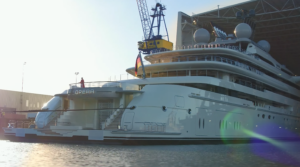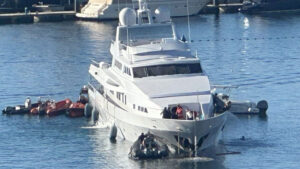Nilaya: 47m Royal Huisman sailing superyacht completes first transatlantic crossing
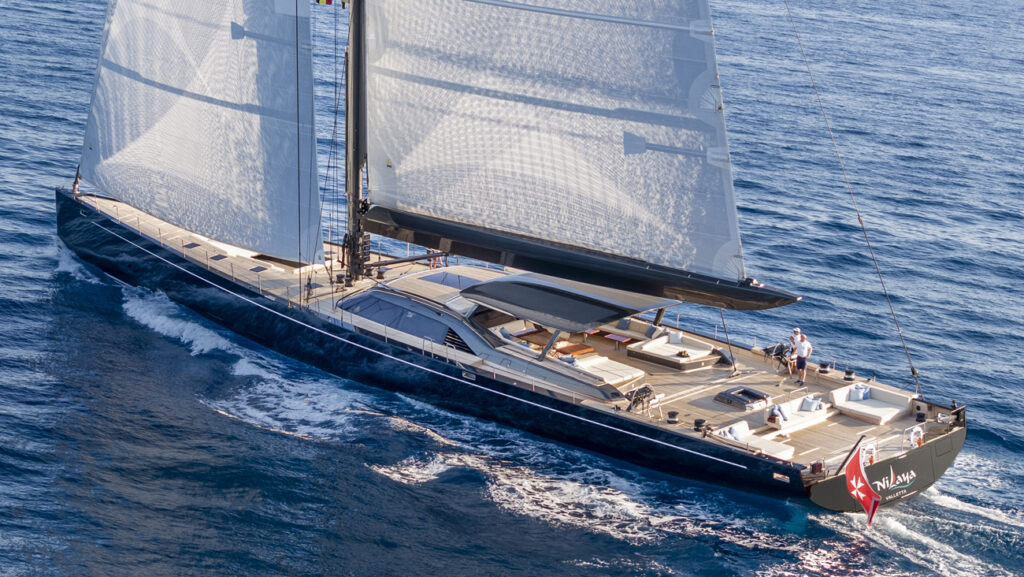 Nauta Design
Nauta Design
The 47m Royal Huisman sailing superyacht Nilaya has sailed to Antigua after a ten-day Atlantic crossing — the ship’s first transatlantic voyage — to the satisfaction of pro-race team head Bouwe Bekking and full-time skipper Romke Loopik.
Nilaya, which is a Nauta and Reichel/Pugh design, built by Royal Huisman, left its shed back in February 2023 and underwent sea trials in May this year. The owner has since taken delivery of the yacht before it departed on its transatlantic voyage in November.
Instantly recognisable for low, modern lines and artfully concealed deckhouse, Nilaya has a modern plumb bow and a straight sheer that slides gently down to a broad, open transom. A custom carbon sloop rig gives the vessel Panamax air draft and the potential to set an extraordinary press of sail. Nilaya is capable of 17 knots on a broad reach in just 18 knots of wind.
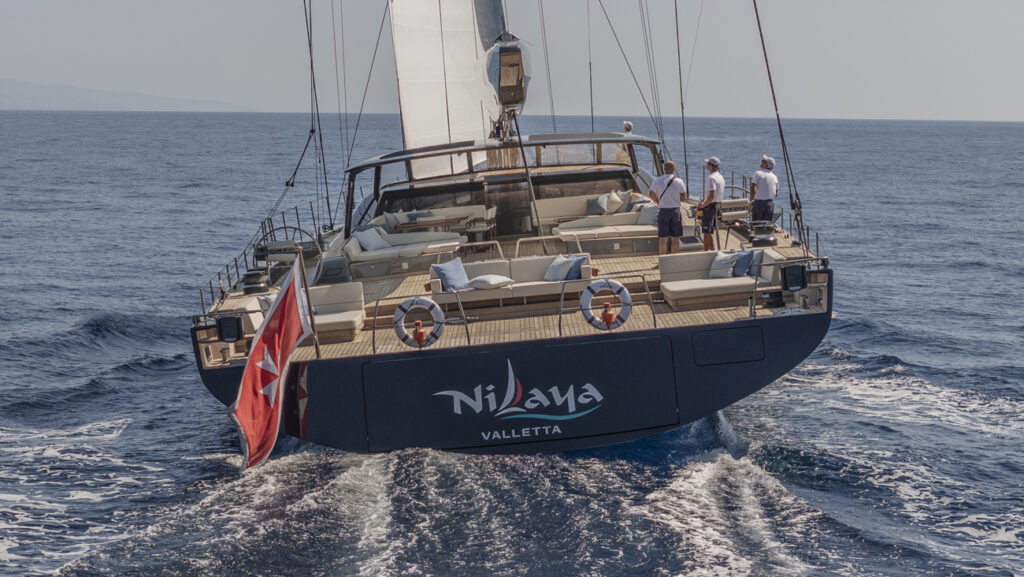
“Nilaya’s racy, low profile, straight bow and wide aft sections echo the look of her owner’s previous yacht while communicating even greater speed and performance,” says Mario Pedol, co-founder of Nauta Design. “She will be the world’s lightest aluminium sailing superyacht by length, rewriting the story of high-performance superyachts.”
The starting point for this sailing boat was the experienced owner’s existing 34m yacht, also called Nilaya, which means ‘blissful home’ in Sanskrit. When he decided to move up to a bigger yacht, he was determined not to lose the deckhouse looks and adventurous spirit, but sought more comfort aboard and lower noise levels without sacrificing speed.
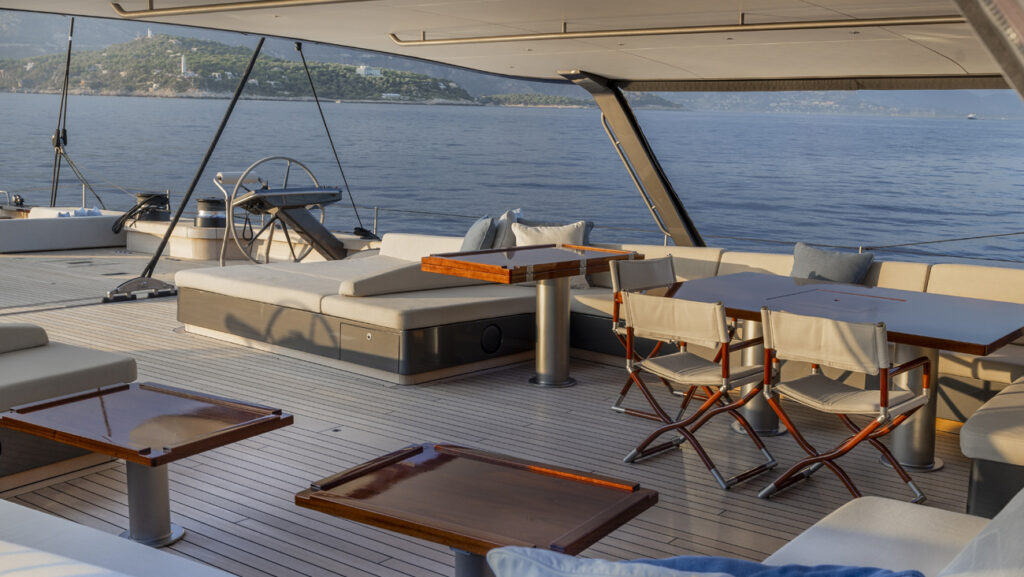
Reichel/Pugh Yacht Design ultimately tested 12 models before development of the final hull shape. The VPP results indicated that in 10 knots of breeze, Nilaya would sail upwind under mainsail and jib with a boat speed of almost 13 knots and nearly 18 knots when reaching a wind angle of 90° in a 15-knot breeze.
Lightweight carbon-fibre construction was naturally considered early on, but the design team decided on an aluminium build.
“I started thinking that an aluminium hull weighs 60-70 per cent more than a carbon boat, but the weight of the hull and deck is only about 15 per cent of the total weight of a sailing yacht,” says Pedol. “Our early intuition was that an aluminium construction sailing yacht could be much lighter than the existing aluminium fleet. Royal Huisman supported this vision with enthusiasm and accepted the challenging target of building a light displacement yacht.
“The final outcome represents a new concept in aluminium construction,” adds Pedol. “Nilaya has a displacement which is 15 per cent more than an equivalent full-carbon boat. That’s a lot less than any other comparable aluminium yacht on the water.”
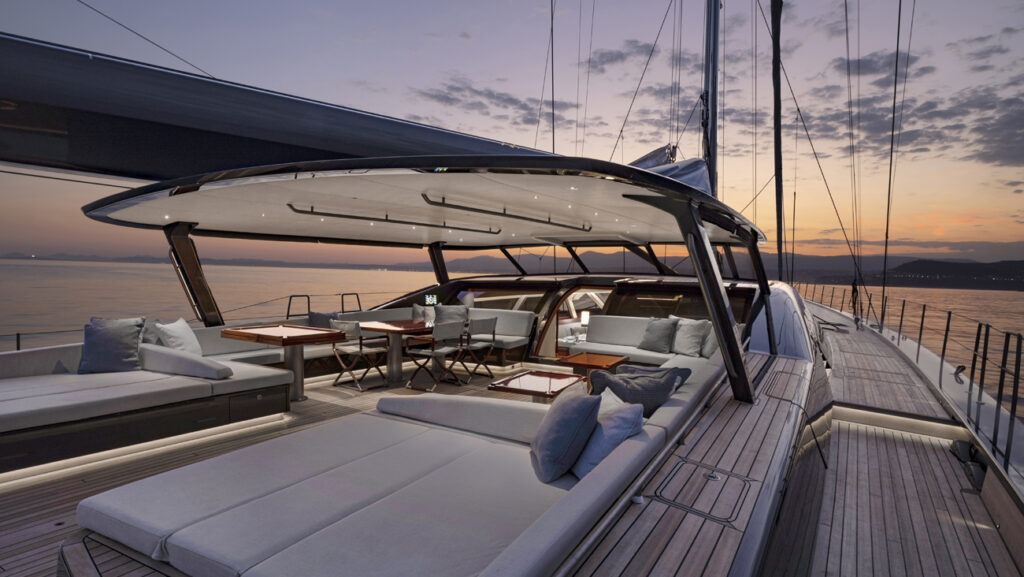
Nilaya’s coachroof blends gracefully with the sheerline, while the wide stern flies above the water, showing off the hull’s double chines. Much thought went into optimising proportions to favour a coaming to protect the guest cockpit and a bulwark to protect the aft cockpit, manoeuvring area, and side passageways.
“A wooden plinth between sections in composite and the teak deck makes them visually lighter and also conceals the string lights that illuminate the deck at night,” says Massimo Gino, co-founder of Nauta. “Teak inserts on the bulwarks, coamings and coachroof further enrich the deck.”
Exterior social spaces are legion on this yacht. At the main guest cockpit under the shade of the carbon hardtop, sun loungers aft transform into chaise lounges, which can be adjusted to match the heel of the yacht. There’s also a full-sized dining table for up to 14 and two further low coffee tables, all protected.
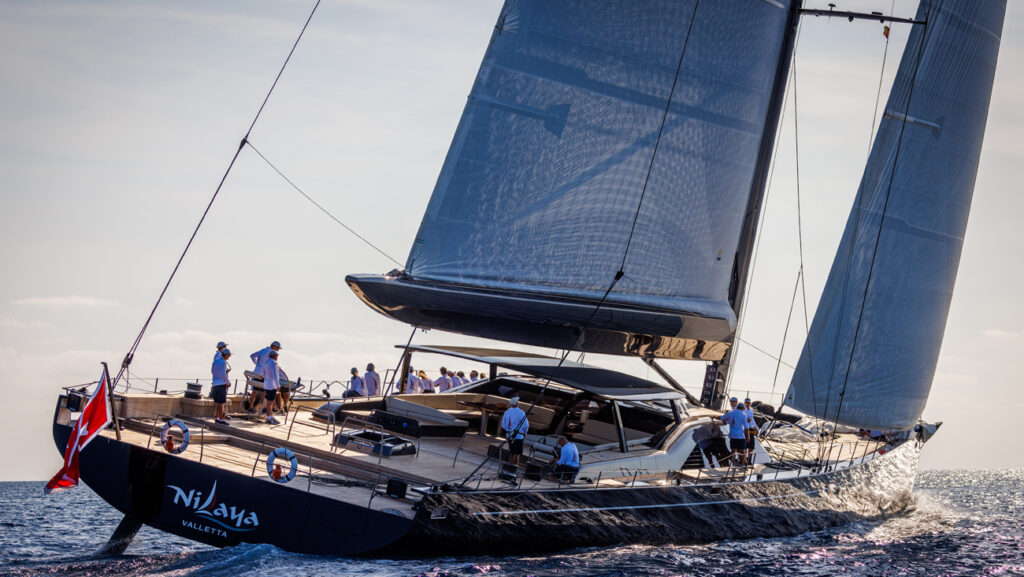
On the foredeck, the tender is stored in a deck recess. With the tender launched or under tow, this space becomes a very cosy forward cockpit with a table and fitted cushions. At the other extremity of the boat, the almost 10m-wide transom sports a beach club, sun loungers and sofas. A hinged section of the aft deck folds out hydraulically to reveal a staircase down to the beach club. This in turn can be raised in order to access the crew tender in its garage aft.
“Our customisation of deck hardware included the styling of the 21m Rondal boom, the through-deck fittings for jib sheets, the bollards and other elements,” says Gino. “Removable gate-shaped grabrails were fitted on deck sections from the transom to the guest cockpit for the safety of crew and guests: when the gates are fitted, there are never more than two steps without a grabrail – a useful feature aboard a large yacht where walking distances, when heeled, are a consideration.”
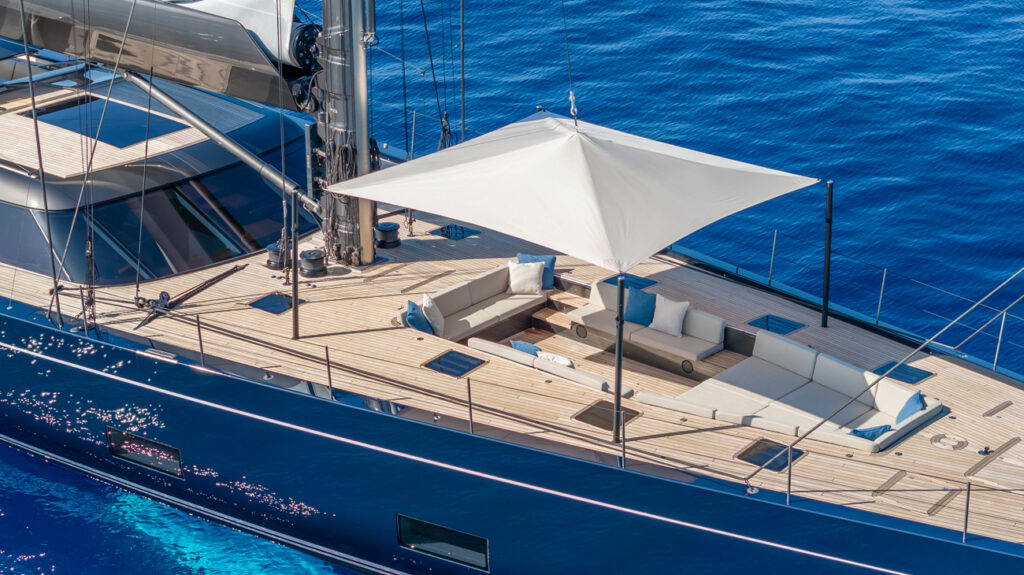
The owner’s decorator, May Vervoordt, chose the materials used in the interior styling. The interior is centred around the raised-deckhouse saloon, finished in a contemporary mix of contrasting woods, pale upholstery and dashes of muted blue and terracotta for sofa and cushions.
There’s a work area in one corner, as well as concealed wine cooler, coffee machine, fridge and ice machine, which are ready when needed and invisible when not.
Down the steps forward and to starboard is the owner’s domain. First comes a more private lounge or TV room, then a dressing room and finally, filling the whole beam of the boat forward, the owner’s cabin. I
“The cabin was a design challenge as it lies beneath the tender bay and required careful study of volumes,” says Gino. “The ceiling balances the tender bay’s central dip with two higher domes at the side passages giving an excellent sense of the impressive width of the cabin.”
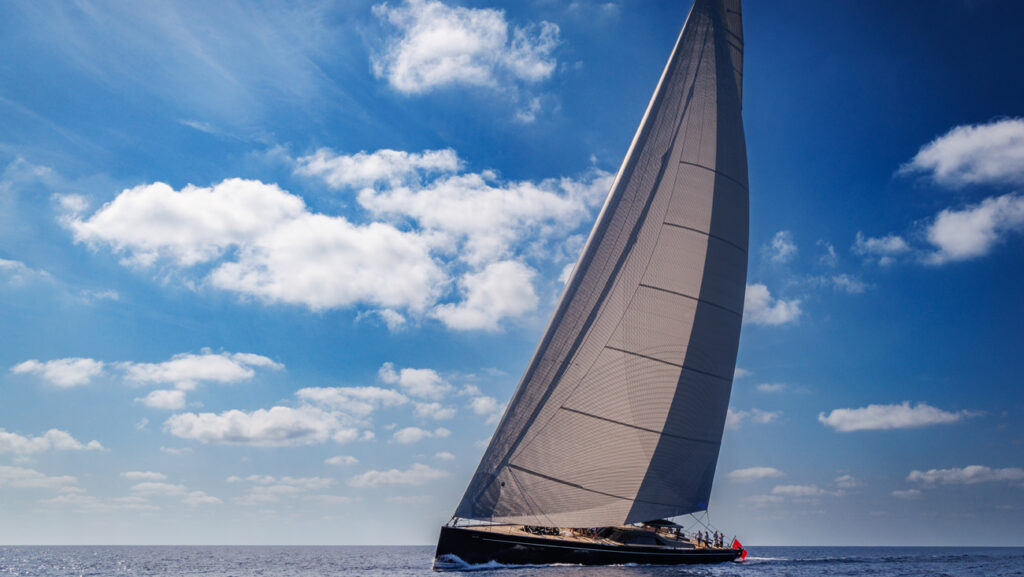
There is also a VIP cabin forward, accessed via stairs on the port side of the great keel trunk which bisects this section of the boat. Two further guest cabins with an additional Pullman are reached down an aft stairway and all can be arranged as twins or doubles, thanks to some smart sliding joinery. The aft guest lobby here also contains vertical wine coolers and a guest day head.
The crew area fills the boat’s aft section and has a dedicated companionway to the aft deck. This space is dominated by the galley to starboard and the mess to port.
“Elegant and refined materials gently blend with the natural light to create a truly cosy environment,” says Pedol. “In the crew area, white lacquered surfaces are predominant, with a light use of mahogany to enrich and warm up areas such as the pantry countertops.”
Nilaya is just starting out in its career as bluewater cruiser, but is likely to appear at St Barths Bucket in March 2024.

Main image courtesy of Carlo Borlenghi.


